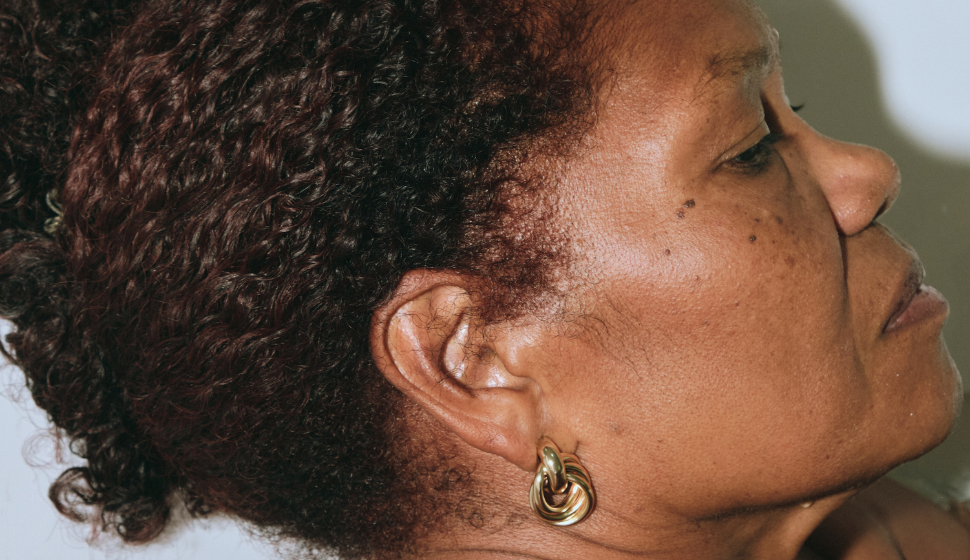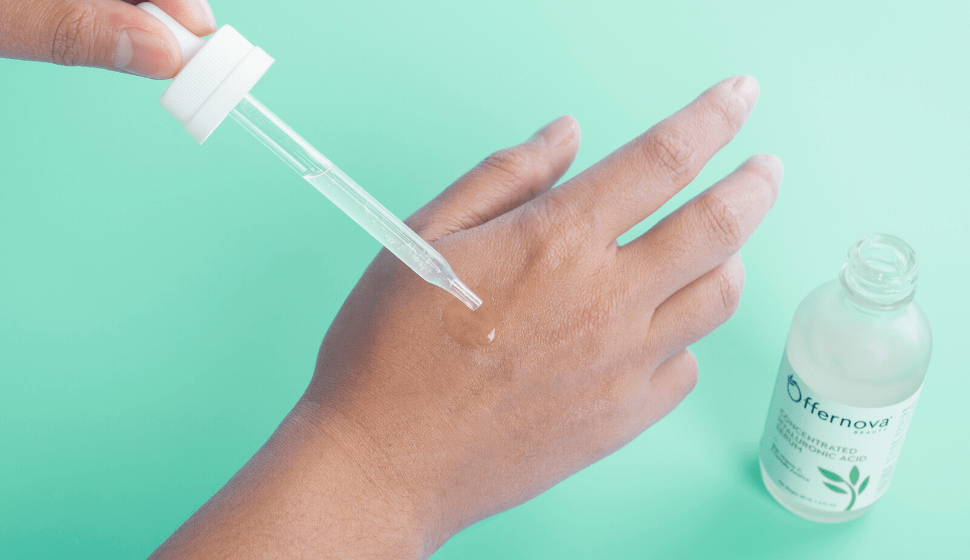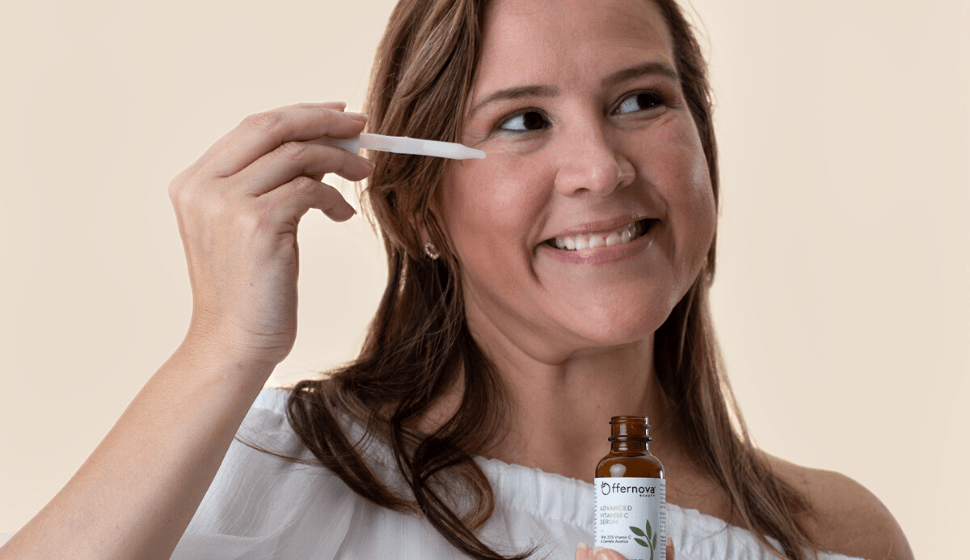Most people, for one reason or another, will experience hyperpigmentation at some point. Yet despite being a relatively typical skincare concern, figuring out how to treat it can be challenging. We're going to talk about how to get rid of dark spots on your face to help you solve this problem.
Types of Hyperpigmentation
Let's start by taking a look at the most common types of hyperpigmentation and what causes them. It's essential to know which kind you have, as this will help you select products that are best suited to your condition. Be sure to speak to your dermatologist if you're having difficulty self-diagnosing your spots.
Post-inflammatory Hyperpigmentation (PIH)
Post-inflammatory hyperpigmentation, or PIH, is a problem that many people experience. It's when the skin turns tan, brown, or purple, and it happens after damage or irritation to the skin. PIH can be the result of an infection, eczema, or burns. But the most typical reason that we see PIH is because of acne.
Melasma
Another common skin condition is melasma, which creates dark, discolored patches. It occurs most often in pregnant women, and melasma is more typical in women than men. People with darker skin tones are also more likely to have it.
While science is still unsure about what exactly causes melasma, there do seem to be a few possible causes. Hormone changes appear to trigger it, like pregnancy or taking birth control pills. UV exposure also seems to be a contributing factor.
Age Spots
Age spots are gray, black, or brown spots that are caused when the skin produces too much melanin. They're also referred to as liver spots (though they have no relation to the liver), and they're usually a result of years of UV exposure.
As you might guess, age spots are more common in older individuals. However, you can get them at any age, especially if you spend lots of time outdoors.
Post-inflammatory Erythema (PIE)
Post-inflammatory erythema, or PIE, is a relatively new term that refers to redness that happens after inflammatory acne. In other words, it is the acne scars leftover from breakouts.
PIE sounds a lot like PIH, but there's actually a fundamental difference. Marks from PIH are brown or black, while those caused by PIE are red.
Which Ingredients Are Best for Hyperpigmentation?
Though things like laser treatments or professional chemical peels are effective at treating hyperpigmentation, they are invasive and expensive. Fortunately, many at-home alternatives can help you. We're going to take a look at both active ingredients and plant-based options for treating hyperpigmentation.
When starting a regimen, it's vital to remember that the damage from hyperpigmentation occurs deep in the skin. It takes time to come to the surface, and reversing the damage also takes time. Patience and consistency are essential when treating spots on the face and body; it may be anywhere from eight to twelve weeks before you see results.
That said, let's take a look at how to get rid of dark spots.
Active Ingredients to Treat Hyperpigmentation
Here are several ingredients popular for their ability to fight hyperpigmentation. The effectiveness of each one depends on your skin type and the blemishes you have.
Retinoids (vitamin A). Retinoids, like the Intensive Retinol Moisturizer, boost collagen production, and speed cell turnover. These abilities are fantastic for slowing down signs of aging, and they're also excellent at helping reduce hyperpigmentation.
Vitamin C. Vitamin C is an antioxidant. Like retinol, it boosts collagen production, but it also strengthens capillary walls, a combination that can help reduce redness. Additionally, using an Advanced Vitamin C Serum protects against the UV rays that cause hyperpigmentation. It has virtually no side effects, so anyone can use it.
Niacinamide. Niacinamide is a form of vitamin B3. It fortifies the skin barrier and reduces inflammation and redness. Some research suggests that it may be effective at lightening dark spots caused by melasma.
Hydroquinone. Hydroquinone creams are a popular skin-lightening spot treatment, and in clinical trials, they're shown to be effective. However, anyone considering using this product should be aware that there is concern about its safety—specifically whether it might be toxic to skin. Both Europe and Canada, for example, have banned it in over-the-counter products.
Alpha arbutin. If you're curious to try hydroquinone, alpha-arbutin is an excellent alternative. It occurs naturally in plants, provides skin-lightening effects, and, most importantly, is safe to use.
Alpha-hydroxy acids (AHA). AHAs are chemical exfoliants. They break up the "glue" that holds dead, off-color cells on the skin surface.
Many people prefer AHAs to face scrubs, which can be too aggressive for hyperpigmented skin. They also make your spot treatments or serums more effective since these products are better able to penetrate the skin. Here are some of the most common AHAs:
- Glycolic acid—excellent for spots and marks from UV damage
- Mandelic acid—made from almonds, works as part of an anti-acne regimen, too.
- Kojic acid—a natural bleaching agent often used to treat age spots.
- Azelaic acid— an all-star ingredient for calming inflammation.
Plant-Based Ingredients for Hyperpigmentation
Here are some plant-based products that are known to help treat dark spots.
Rosehip Seed Oil. Rosehip Seed Oil is widely considered to be one of the best plant oils for relieving acne scars (and other scars in general) and dark spots. It contains vitamin A, which we mentioned above speeds cell turnover and brings new skin to the surface more quickly. It also has tons of antioxidants that reduce inflammation.
Vitamin E Oil. Vitamin E works hard on its own to repair damaged skin cells, but where it delivers the best results is with vitamin C. Pair the two for a powerhouse combination that will both brighten skin and reduce hyperpigmentation. This combination is recommended for anyone with melasma.
Papaya Seed Oil/Extract. Papaya seed oil is loaded with lots of ingredients that lighten dark spots, most notably vitamins A, C, and E.
Curcuma Extract/Oil. Curcuma contains antioxidants and has anti-inflammatory properties, which may be helpful in your fight against spots.
Evening Primrose Oil. This oil contains gamma-linolenic acid, a powerful anti-inflammatory ingredient. It's excellent at reducing hyperpigmentation caused by hormone imbalances.
Green Tea Extract/Oil. Green tea is packed with antioxidants, and using it may have skin-lightening effects.
Steps to Prevent Dark Spots
Though there are lots of home remedies for hyperpigmentation, it's best to stop it before spots and discoloration become a problem. Here are a couple of ways to do so.
Use Gentle Cleansers Only
Irritation is what causes hyperpigmentation, which is why it's important to choose a gentle cleanser. Too many people use harsh cleansers that strip the skin of its natural oils and damage the skin barrier. Instead, you want to keep your face clean and bacteria-free, but without causing irritation. This point is especially important if you have blemish-prone skin or suffer from a skin condition like psoriasis.
And a quick note on skin lightening products: It may seem like a fantastic idea to use them, but proceed with caution. Many have the potential to irritate the skin.
Always Remember SPF
Your best line of defense against dark spots is sun protection. Avoiding skin cancer is, of course, the primary reason to use SPF, as well as preventing early aging caused by sun damage. However, UV rays also lead to unwanted discoloration, and wearing sunscreen is an easy, effective way to prevent sunspots.
Which is why we can't say it enough—wear sunscreen every day, even if you're staying inside. And limit your time in the sun as much as possible. Your future skin will thank you.
Build your Routine to Reduce and Prevent Dark Spots
If you want to remove and prevent dark spots, the most important thing is first to understand that it requires patience and consistency. With that in mind, we encourage you to put your routine together and commit to it for at least 3-4 months. How does an anti-hyperpigmentation routine look like?
Morning routine
Step 1- Gentle cleanser or rinse your face with cold water if you don't have oily skin.
Step 2- Gentle Hydrating Toner or mysts. Avoid astringent toners that dry out your skin.
Step 3- Vitamin C Serum (with at least 15% concentration)
Step 4- Your favorite sunscreen.
Step 5- Daytime Moisturizer.
We recommend the Restorative Eye Cream. You may also skip the moisturizer and apply a few drops of Rosehip Oil if you enjoy using facial oils.
Step 6- Makeup, if you enjoy it!
Evening routine
Step 1- First Cleanse: Micellar water, makeup remover, or cleansing oil depending on your preference or skin type.
Step 2- Second Cleanse: Gentle cleaner
Step 3- One of the options below. Please do not use AHAs together with active ingredients like retinol on the same day as it can irritate your skin.
We recommend- Intensive Retinol Moisturizer.
Step 4- Nighttime Moisturizer. We recommend Restorative Eye Cream.
We hope this guide gives you a clear idea of the steps you need to take to reduce and prevent hyperpigmentation. Now that you know how to get rid of dark spots on your face, we invite you to discover more about the benefits of Vitamin C Serum and how to use it to restore your skin.



